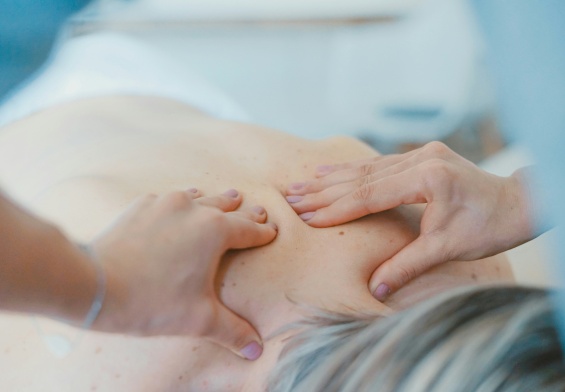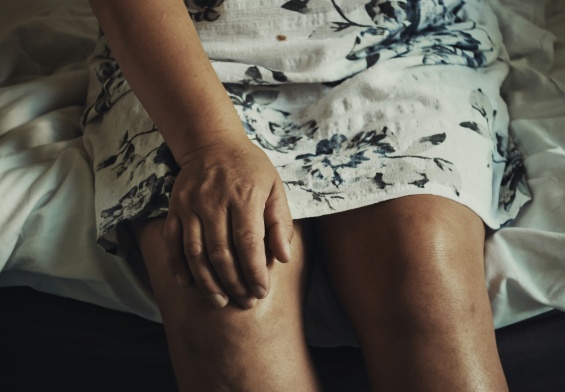A famous person once said, “Time wounds all heels.” A clever twist on the old saying, ‘time heals all wounds.’ But how true is it? Is it necessary, as we age, for us all to feel the burden of time on our heels, our bones, our joints? Though it is a certainty that aging can cause joint pain, it’s not a foregone conclusion. Does time tend to break down our bodily processes and functions? Does it tend to lead to deterioration and disease processes that can cause joint pain? Absolutely. Does it have to be that way? Absolutely not. There are steps we can take to prevent joint pain from occurring or worsening as we age. Following is more information from orthopedic surgeons in New Jersey about the causes and effects of joint pain, as well as preventive measures we should all take as we grow older.
What can happen to my joints as I age?
Your skeletal structure is a concert of moving parts… bones, joints, cartilage, fluid, and more. All of these individual parts need to belong to a well-oiled machine in order to work properly. If any of these parts become compromised, joints stiffen and joint pain can occur.
Loss of bone density
As we age, we lose bone density, making bones brittle and joints less mobile and more susceptible to fracture. Bone loss occurs mostly due to loss of calcium and other minerals. Additionally, recent medical studies show that women may lose bone density due to loss of estrogen as they move into menopause and beyond.
Spine shortening
The spinal column is constructed of vertebrae with discs (cushions) in between bone. As we get older, loss of mineral content often occurs in these vertebrae, resulting in thin bones. Additionally, discs can lose their fluid. These processes can result in spine curvature as vertebrae compress together.
Joint stiffening
Millions of people experience joint stiffening as they age. This typically occurs due to reduction in the fluid that joints need to stay mobile and flexible. As fluid reduction in joints occurs, so too will cartilage between joints reduce. This process causes joints to rub together.
Osteoporosis
Osteoporosis is the process by which bones decrease in mass and density. And, although this can happen to both men and women as they age, women tend to experience it far more often due to menopausal changes. With osteoporosis comes far less mobility, more bone fracturing and breakage, in many cases causing significant pain for sufferers.
What can I do about it?
If you’re thinking the answer to this question is ‘healthy lifestyle’… you nailed it! Just as with many disease processes, pain that accompanies breakdown of bones and joint structures often is inevitable for those who live an unhealthy lifestyle. Prevention is often a matter of regular exercise, healthy diet, and regular checkups.
Exercise
Your joints need fluid, and moving your joints on a regular basis through a healthy exercise program helps to keep your joints hydrated and moving more freely, reducing joint pain or even avoiding it altogether.
Healthy diet
Naturally, every structure in your body needs vitamins and minerals. You probably already know that your bones and joints need calcium. Without it, your joints cannot function properly. They also need other vitamins and minerals, such as vitamin D, protein, and vitamin A. Maintaining healthy joints that don’t cause you pain as you age starts with eating a healthy diet that includes green, leafy vegetables, lean protein, and healthy fruits, for starters.
Estrogen supplementation
Estrogen loss has been linked in recent medical studies to bone loss, which can cause joints to become less mobile and bones more fragile. If you’re a pre-menopausal or menopausal woman, ask your doctor if estrogen supplementation is right for you.
Regular doctor visits
Seeing your doctor on a regular basis is essential to keeping ahead of spinal, bone, and joint changes that can cause joint pain and stiffness and rob you of your healthy lifestyle.
Joint pain isn’t an inevitable part of aging. On the contrary, many folks throughout the country live lives that are free of joint pain well into their 60s, 70s, and beyond. Whether you’re someone who has never experienced joint pain, you’ve experienced joint pain in the past, or you’re suffering from joint pain at this very moment, there are steps you can take to ease your pain or even prevent it altogether. Contact an orthopedic surgeon in New Jersey to schedule a consultation for more information about the causes of joint pain and their relationship to aging.



